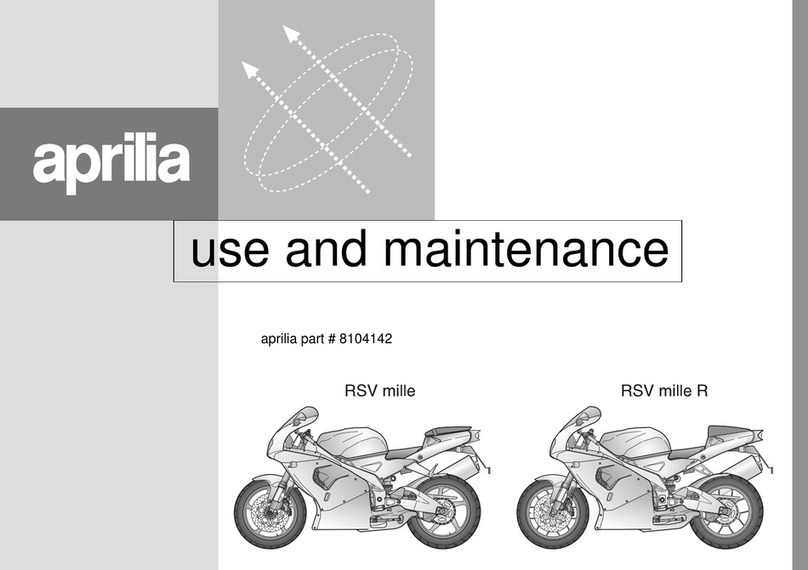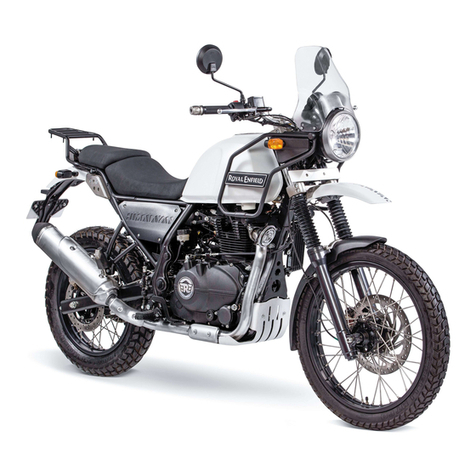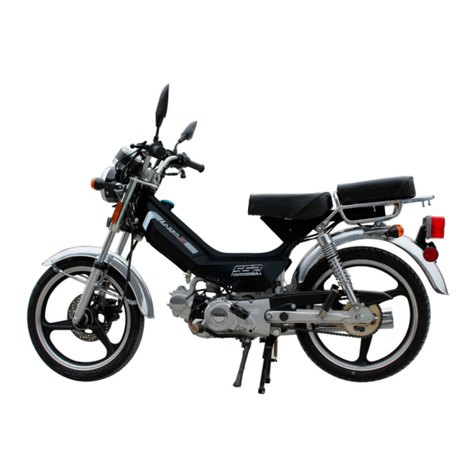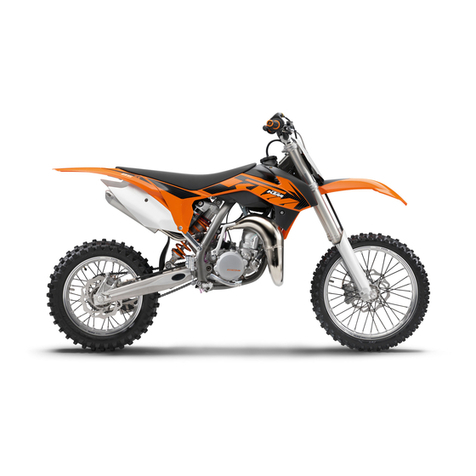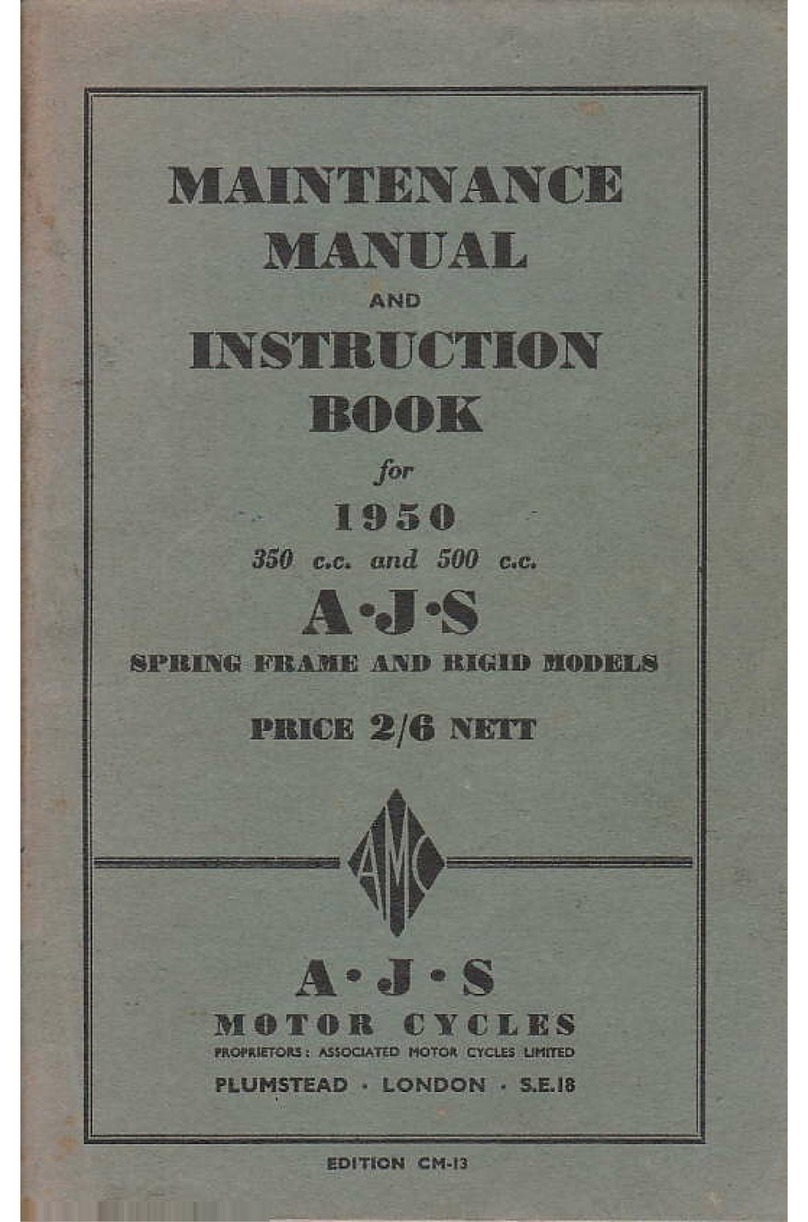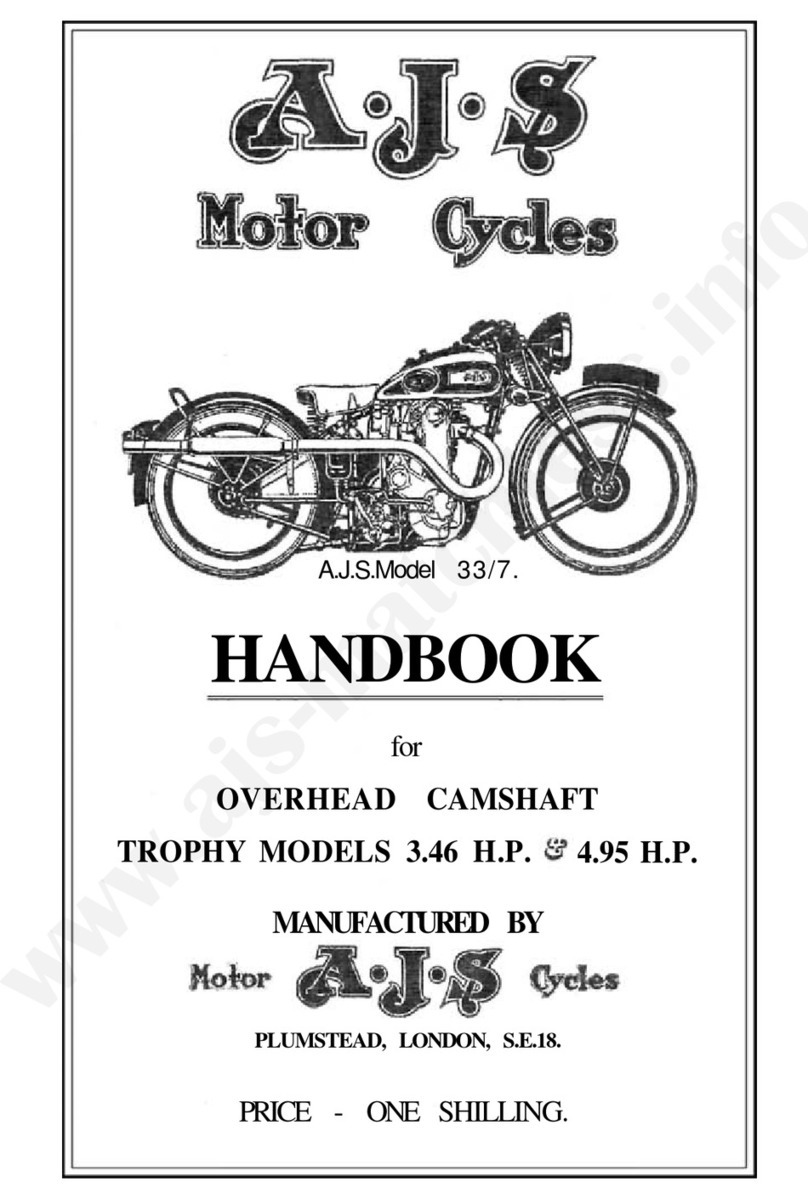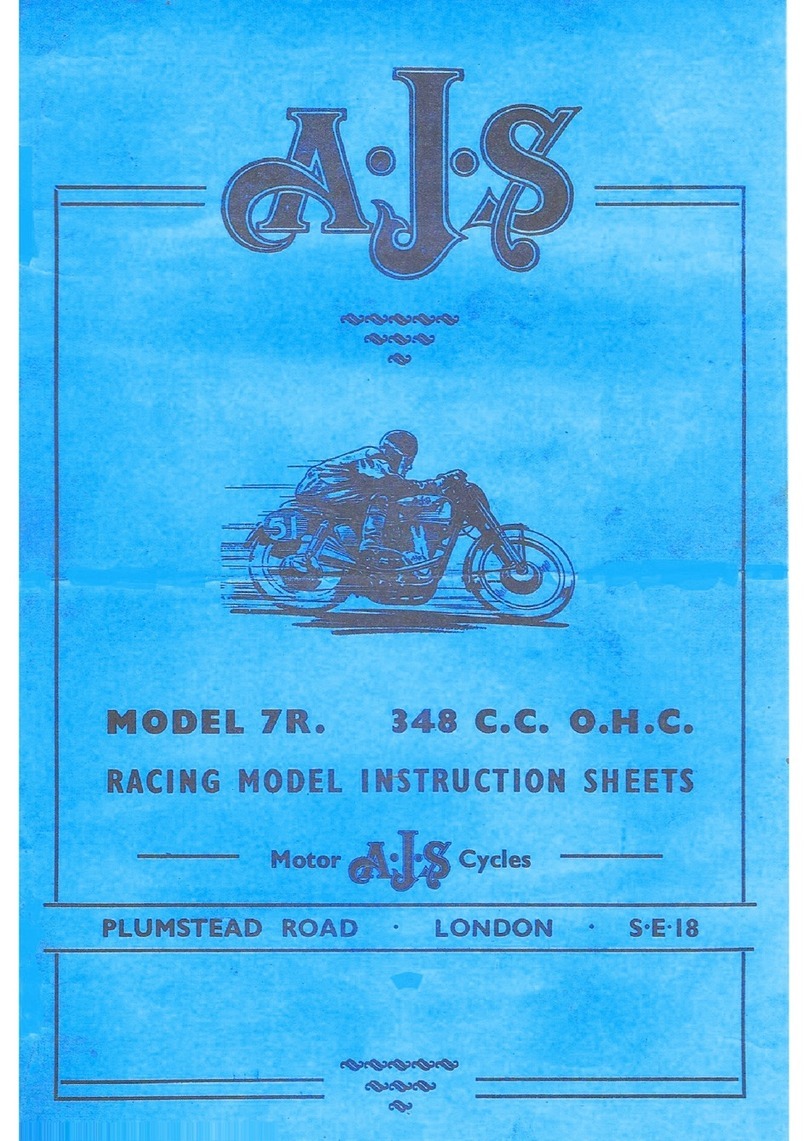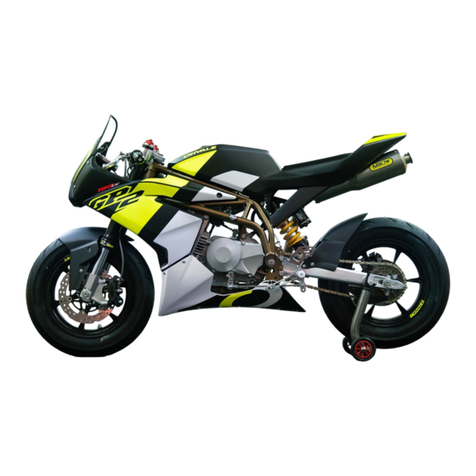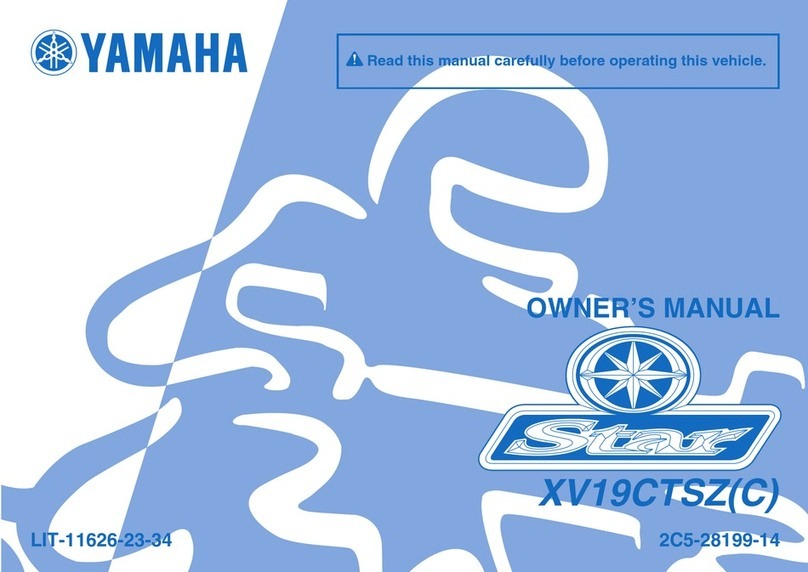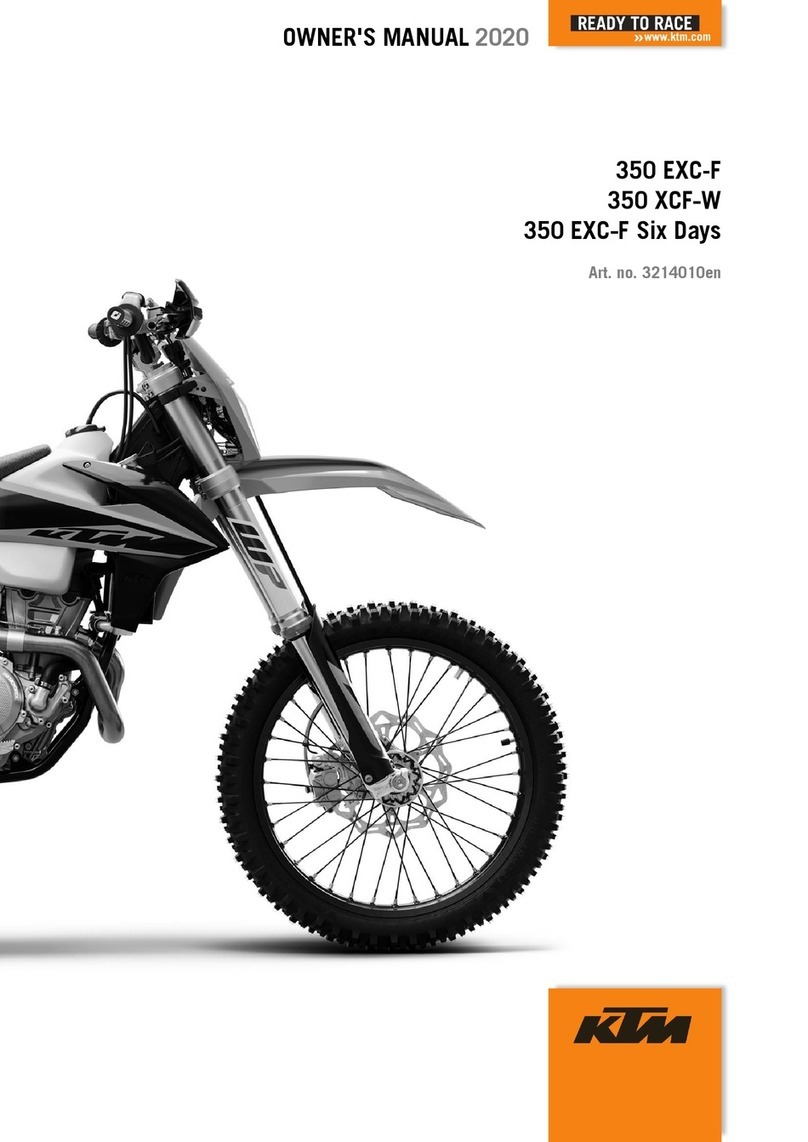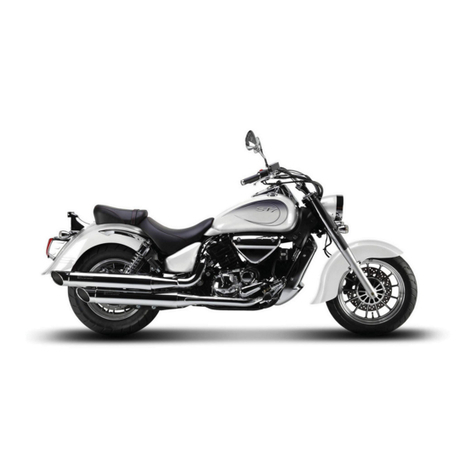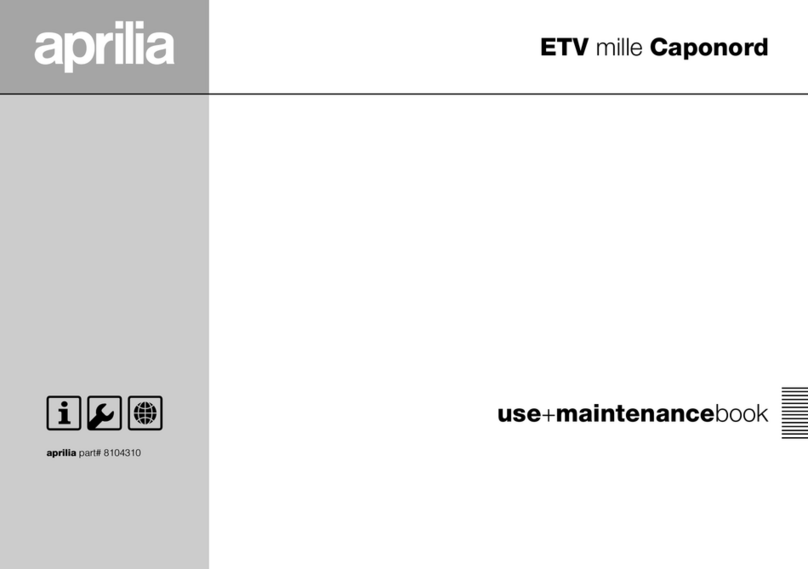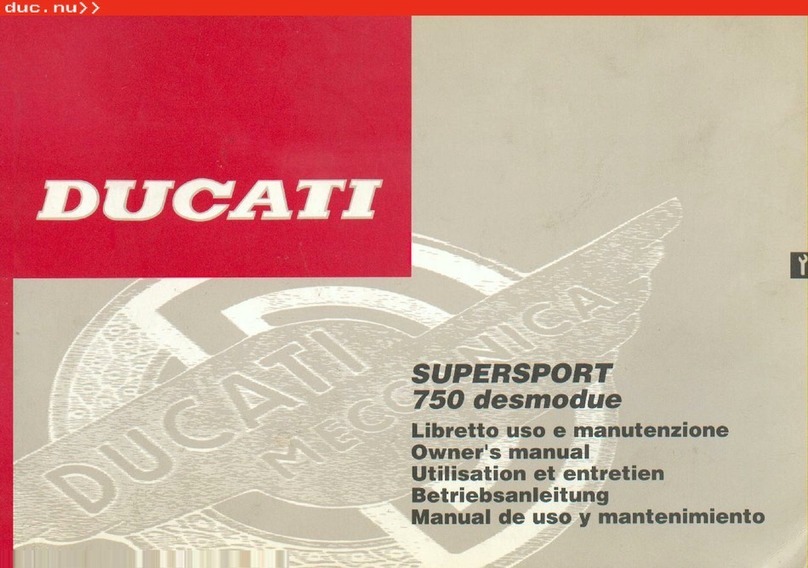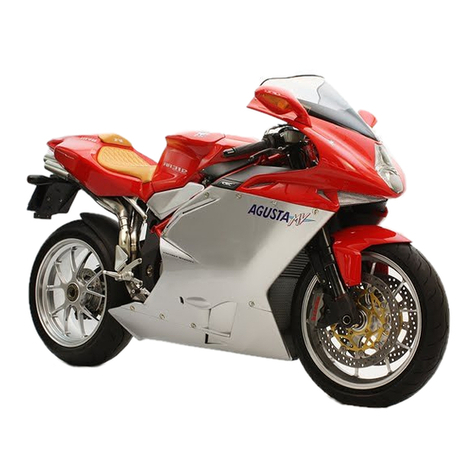(1)
(2)
(3)
(4)
(5)
(6)
(7)
(8)
(9)
(10)
(11)
(12)
(13)
(14)
(15)
(16)
(17)
(18)
(19)
(20)
Throttle twist grip. On right handlebar. Twist inwards to open. When
fully closed engine should just idle when hot.
Air lever. Small lever on right handlebar. Pull inwards to increase air supply
to carburetter. Once set, when engine has warmed up, requires no alteration
for different road speeds. Should be fully closed when starting engine from cold.
Ignition lever. Small lever on left handlebar. Advances and retards ignition
point. Pull inwards to retard. Retard two-fifths of total movement for starting.
Magneto cut-out switch. Push switch on magneto contact breaker cover. A
press action switch which, when operated, short circuits the magneto, thereby
stopping the engine from firing. Place gear foot lever in neutral position before
using cut-out switch to stop engine.
Clutch lever. Large lever on left handlebar. Grip to release clutch so that
drive to rear wheel is disconnected.
Front brake lever. Large lever on right handlebar. Grip to operate front
wheel brake and, for normal braking, use in conjunction with rear brake application.
Rear brake lever. Pedal close to left side foot rest. Depress with left foot to
apply rear brake. Apply gently and use increasing pressure as the road speed
decreases.
Gear change lever. Pedal in horizontal position close to right foot rest. Con-
trols selection of the four speeds, or ratios, between engine and rear wheel
revolutions, with a "free", or neutral, position. See illustration 2, page 10.
Kick-starter lever. Vertical pedal on right hand side of gear box.
Lighting switch. In top of head lamp. Controls lamps by a rotating lever which
has three positions:
(1) "OFF" Lamps not on.
(2) "L" Pilot lamps, rear lamp and speedometer lamp on.
(3) "H " Main headlamp, rear lamp and speedometer lamp on.
Ammeter. In top of head lamp. Indicates flow of electric current, in, or out,
of battery. ("Charge" or "Discharge".)
Horn switch. Press switch on left handlebar.
Gear box filler cap. Located on top edge of kick-starter case cover. Allows
insertion of lubricant and access to clutch inner wire and internal clutch operating
lever.
Footrest for rider.
Petrol tank filler cap. Located in top of fuel tank. To release, slightly depress,
turn fully to the left, and then lift away. There are two locking positions. The
middle position, between the fully tightened down and "lift away" positions, is in
the nature of a "safety" device to prevent loss that might be occasioned by
unauthorised meddling.
Oil tank filler cap. Located on top edge of oil tank. To remove, unscrew.
Dipping switch. Trigger switch on left handlebar. Used to select normal or
"dipped" beam of head lamp when main lighting switch lever is in the " H " position.
(The main head lamp bulb has two filaments.)
Dummy grip. The fixed grip on the left handlebar.
Speedometer hand. The rotating hand in speedometer head. Indicates speed
in miles per hour to a maximum of 120 miles per hour. (Certain machines for
export have the head calibrated in kilometres per hour to a maximum of 180 k.p.h.)
Total mileage recorder. The top set of figures located in the speedometer dial.
Indicates the number of miles (or kilometres) travelled to a total of 100,000 and
then automatically re-sets to zero. -
Refer to Illustration 1
CONTROLS

